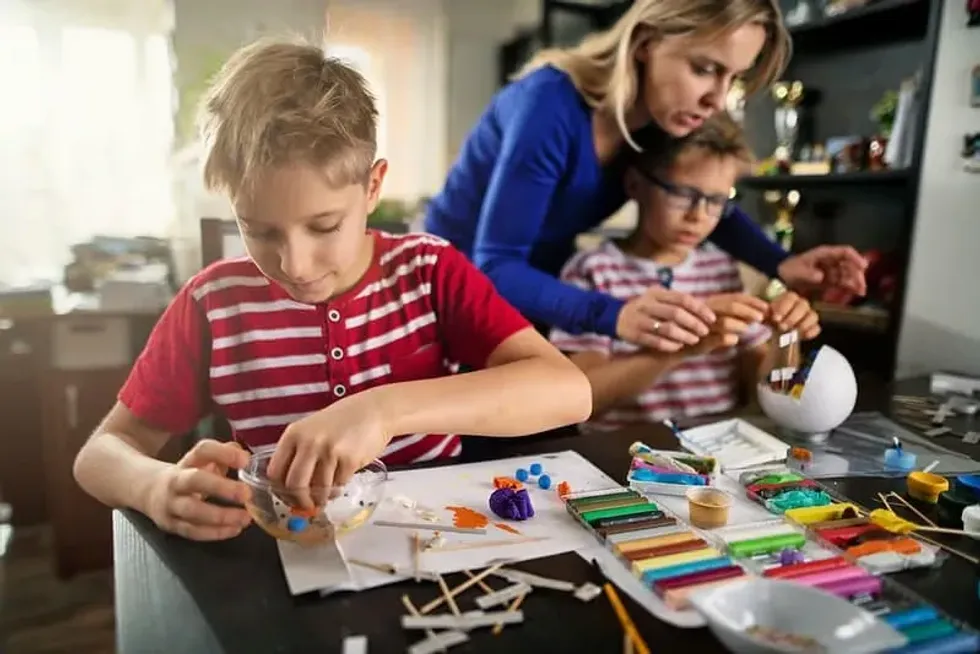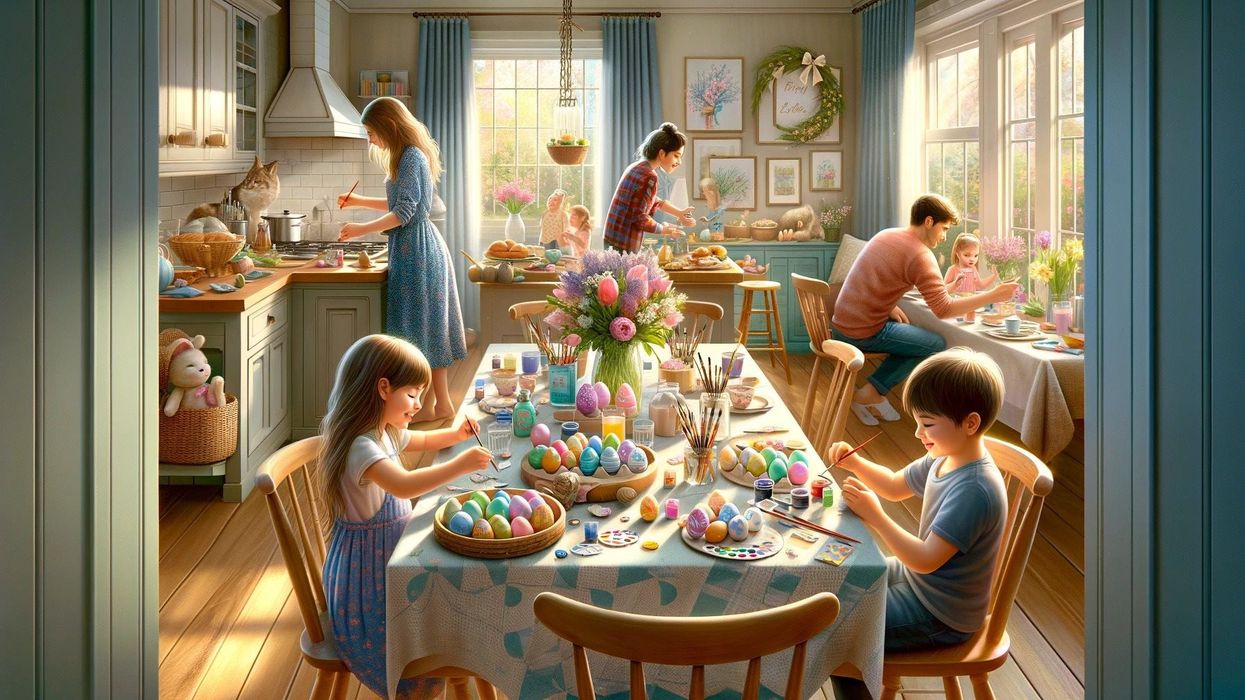Introducing variation into learning for older kids is really important; after all, why should younger kids have all the fun?
Creating a plant cell model is not only a fun way of learning this important part of the science curriculum, but it also helps to solidify their learning. Visual and kinetic learners, in particular, will really benefit from making this model.
The first thing to learn about plant cells is what makes them different from an animal cell. While all cells have a cell membrane, cytoplasm, nucleus, mitochondria and ribosomes, plant cells have three distinguishing features not found in animal cells - a cell wall, vacuole and chloroplasts, which are needed for the process of photosynthesis.
Make sure you include these in your model plant cell.

Image © daliashalbak
What To Include
Membrane: Controls any movement of substances going into and out of the plant cell.
Cytoplasm: This is jelly-like - chemical reactions happen here.
Nucleus: Controls what goes in the cell. It also contains the plant cell's genetic material.
Mitochondria: This is where respiration happens in the plant cell.
Cell wall: This tough wall is made of cellulose. It helps to support the plant cell.
Vacuole: This contains cell sap. This helps to make the plant cell firm.
Chloroplasts: Conduct photosynthesis - they absorb light from the sun, and use it, with carbon dioxide and water to produce the food for the plant.
If you want to extend the learning and go beyond KS3 into the realms of GCSE and A-level, you could also include these cell parts:
Ribosomes: This is where protein synthesis happens.
Mitochondria: These organelles* have enzymes for respiration. This is where most energy from respiration is released.
Golgi apparatus: This stores and modifies proteins to take on certain functions and get them ready to be transported to other parts of the cell. This sack of flattened sacs sits near the nucleus.
Endoplasmic reticulum: This is a continuous membrane system that creates flattened sacs within the cytoplasm. It is important for the process of folding, synthesis, modification, and transport of proteins.
*Organelles are specialised structures contained within a living cell.
We've suggested three ways to make a plant cell, so hopefully, there will be something here you can try without having to go out and buy lots of extra materials.
What Is Photosynthesis?
Green plants use a process called photosynthesis to make their own food.
Photosynthesis uses sunlight, water, chlorophyll, and carbon dioxide gas (CO2).
Chlorophyll is found in all green plants, concentrated in the leaves. The plants get water from the soil and carbon dioxide from the air.
The chlorophyll absorbs the energy from sunlight, and this energy is used to convert carbon dioxide and water into sugars (nutrients) and oxygen. Any sugars not used by the plant are stored while oxygen is released into the air.
The process of photosynthesis means green plants are essential for humans and other animals, as they provide food, and produce the oxygen we need to breathe.
The equation for photosynthesis is: carbon dioxide + water → glucose + oxygen.
Lunchbox Model Plant Cell
You will need:
Cell membrane: - A plastic lunch box, Tupperware box or ice cream tub
Cell wall: - Cling film
Chloroplasts: - Some frozen peas/or some green plastic beads
Vacuole: A sealable snack/freezer bag filled with water (a water snake/water wiggly toy would do the job
Nucleus: A grape, olive, ping pong ball or roller ball from a roll-on deodorant
Cytoplasm: - Green food color in a jug of water or wallpaper paste
Method:
1. Line your box with the cling film, making sure you leave plenty over the sides to avoid spillage.
2. Add your water-filled bag or water snake toy.
3. Pour in some frozen peas/beads—about two cups’ worth.
4. Add the grape, olive, ping pong ball/rollerball.
5. Carefully pour the colored water or wallpaper paste into the box.
Your plant cell model is complete!

Image ©sath8056
Household Items Model Of A Plant Cell
You will need:
Cell wall - A cardboard box or foam board to make sides and base
Green paint
Cell membrane - Yellow card or white card and yellow paint
Cytoplasm - Black paint or black foam board. You could use bubble wrap, painted black.
Nucleus - Tennis ball
Blue paint
Hot glue gun and glue
Chloroplasts - Foam packing peanuts or cheesy puff crisps (anything like Wotsits), small green sweets, such as Skittles
Vacuole - Ball of yarn or garden twine - must be long rather than round
Method:
Paint the inside of your box green - or make a box shape from foam board.
The base must be black - either use foam board or just paint the bottom of the box - this is the cytoplasm.
Line the sides with yellow card - painted if you can't get yellow. This is the cytoplasm.
Cut a tennis ball in half and paint with some poster paint or emulsion – whatever you have to hand. Stick to the bottom of the box using a hot glue gun (adult supervision required)
For the chloroplasts take some packing peanuts (or some cheesy puff/Wotsits) and slice in half lengthways. Stick them to the bottom of the box with the flat side upwards. Glue three of your small green sweets to them.
Vacuole - Take a long ball of yarn or garden twine, paint over with some polyurethane varnish if you have it and stick it to the base.

Image © mamafetz1
Edible Plant Cell Model
You will need:
Marshmallows
Crisped rice cereal
Nucleus - Digestive biscuit (or any other round biscuit)
Icing made from icing sugar
Frosting made from icing sugar and butter
Blue and yellow food colouring
Chloroplasts - Green small sweets and foam bananas
Square (preferably) cake baking tin
Method:
1. Gently melt some marshmallows in the microwave – check regularly to make sure they don’t burn.
2. When they are gooey enough, mix in the cereal, making sure it is all coated in marshmallow.
3. Press the mixture into the greased base of a square cake baking tin.
4. Put in the fridge to set.
5. Once set, take out and use blue frosting to coat the edges of the cake tin. This is the cell membrane.
6. Take a digestive biscuit (the nucleus), cover in blue icing and stick to the crispy base with some more icing.
7. For the chloroplasts in the cell, stick a couple of foam bananas to the base with icing, with their flat side facing up. Then stick some green sweets along the top side.
8. Use icing to make a long ‘puddle ‘ shape for the vacuole.
9. Appreciate its artistic and scientific beauty of your plant cell model – and then eat it!
Now you have made your plant cell models, why not have a go at an animal cell model, using a different method?











